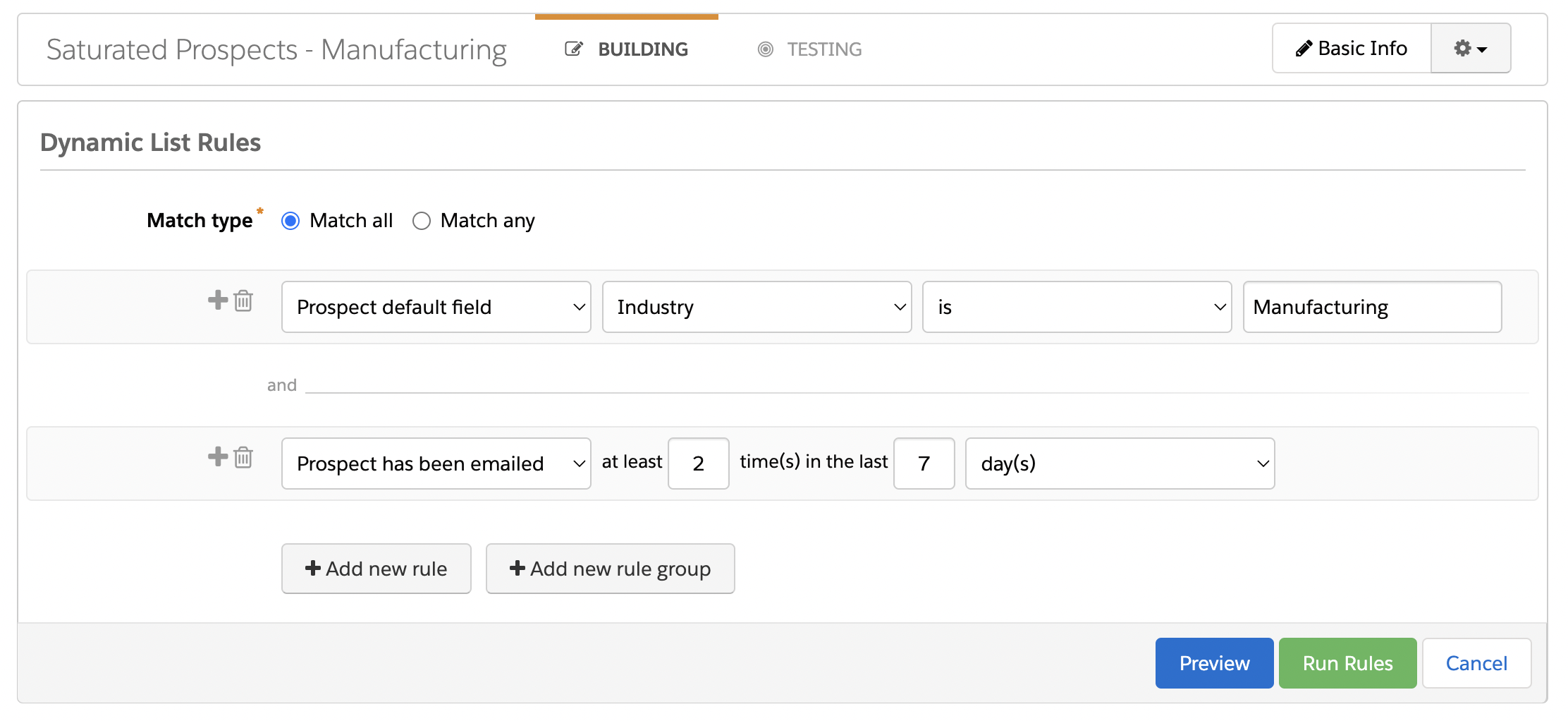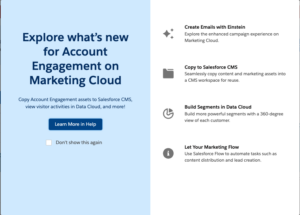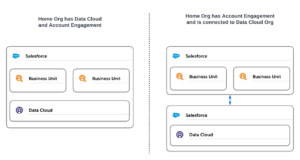Recency and Frequency: Avoid Email Fatigue With Account Engagement (Pardot)
- December 16, 2022
- Email Delivery, Email Open Rates, Salesforce Ben | The Drip

Recency and frequency are controls you can put in place to start alleviating marketing fatigue with Account Engagement (Pardot).
‘Marketing fatigue’ describes the phenomenon when email marketing loses its impact with your audience. Just like how ‘fatigue’ means tired and sluggish, prospects feel indifferent towards your campaigns, and alarmingly, you’ll see email metrics begin to dwindle.
These controls are applied using dynamic lists (that update continuously). The list is then used as a suppression list which prevents prospects from certain campaigns, if they have been emailed:
- Too many times (in a given time frame) = frequency.
- Too recently (in a given time frame) = recency.

Improve the quality of your marketing campaigns by restricting the quantity. This trick has become more important than ever. Let’s explore recency and frequency in Account Engagement (Pardot).
Step 1: Dynamic List
Create a dynamic list, and select the rule type: ‘Prospect has been emailed’.
- ‘At least [x] times’ will determine the frequency, i.e. the number of times they received emails.
- ‘In the last [x] day(s)/week(s)’ will determine the recency, i.e. the period of time you’re measuring.
In the example below, we’re stating that prospects who have been emailed 3 (or more) times in the last 30 days, should not be emailed.

Step 2: Apply as a Suppression List
Remember, if a prospect qualifies for the list, they should not be emailed. Therefore, add the dynamic list to the ‘suppression lists’ box in any list emails and Engagement Studio programs:
As this is a dynamic list, if a prospect is in an Engagement Studio program, and they qualify for the suppression list, they will be removed from the program. If they then don’t qualify for the list, and the program is still in progress, and the prospect wouldn’t have otherwise finished the program, then they will be re-added back into the program at the step they left at.
Extending Recency and Frequency
By selecting the Match All rule type you can play around with adding more rules. You can narrow down on particular segments that could be showing different engagement behaviors to the rest of your prospect database. For example, manufacturing prospects could tend to engage with less emails, so you set tighter boundaries for them:

By selecting the Match Any rule type, add more recency and frequency rules to keep everything in one list (simpler to manage suppressions, and communicate across your team):

Recency and Frequency For Static Lists?
The rule ‘prospect has been emailed’ which controls recency and frequency is only found on dynamic lists. Of course, this is for a reason! Recency and frequency constantly changes, which dynamic lists can handle.
You can create a one-time snapshot of the recency and frequency list by adding those prospects in the dynamic list into a static list – but it’s not recommended!
Why Not Use ‘Do Not Email’?
A good question that needs clearing up. Again, recency and frequency constantly changes, and the ‘Do Not Email‘ field is intended for permanent/semi-permanent suppression. As dynamic lists update automatically, you don’t need to interfere with any data management.
Einstein Engagement Frequency
Let Einstein decide when prospects are receiving too many emails, based on their previous engagement with Einstein Engagement Frequency. This replaces rules-based ‘recency and frequency’ with no need to hard code these figures into dynamic lists. Prospects will be automatically classified as “Undersaturated”, “On Target”, or “Saturated”.

Why Recency and Frequency is Important
Recency and frequency should be on every marketer’s mind to stay relevant and welcomed by prospects, and overall, keep your sending reputation at a good level. Sending emails to unengaged subscribers damages your deliverability score in the long run.
This is also key for staying compliant with any preferences that prospects have selected. Perhaps you’ve included an option on your email preference center, where prospects have updated their preferred frequency.
Summary
Recency and frequency is controlled by the dynamic lists feature, and you are able to set it up within minutes. You need to remember to apply this list as a suppression list to any list emails/Engagement Studio programs, and communicate this to the rest of your team.
Recency and frequency can reveal a lot about your email marketing cadence that you may not have realized, so it’s worth having a play around with different rules to get a pulse on your prospect database. Consider using recency and frequency to improve the quality of marketing messages, by restricting the quantity.
This Pardot article written by:
Salesforce Ben | The Drip
Lucy Mazalon is the Head Editor & Operations Director at Salesforceben.com, Founder of THE DRIP and Salesforce Marketing Champion 2020.
Original Pardot Article: https://www.salesforceben.com/the-drip/recency-frequency-account-engagement-pardot/
Find more great Pardot articles at www.salesforceben.com/the-drip/
Pardot Experts Blog
We have categorized all the different Pardot articles by topics.
Pardot Topic Categories
- Account Based Marketing (ABM) (7)
- Business Units (14)
- ChatGPT / AI (3)
- Completion Actions (5)
- Connectors (10)
- Custom Redirects (4)
- Data Cloud (3)
- Demand Generation (8)
- Dynamic Content (7)
- Einstein Features (11)
- Email Delivery (17)
- Email Open Rates (3)
- Pardot A/B Testing (2)
- Email Mailability (16)
- Do Not Email (1)
- Double Opt-in (2)
- Opt Out / Unsubscribe (14)
- Email Preferences Page (6)
- Engagement Studio (16)
- Industries (1)
- Non Profit (1)
- Landing Pages (9)
- Lead Generation (1)
- Lead Management (13)
- Lead Routing (3)
- Lead Scoring (16)
- Leads (3)
- Marketing Analytics – B2BMA (9)
- Marketing Automation (1)
- Marketing Cloud (3)
- Marketing Cloud Account Engagement (4)
- Marketing Cloud Growth (2)
- New Pardot Features (6)
- Opportunities (2)
- Optimization (2)
- Pardot Admin (65)
- Duplicates (1)
- Marketing Ops (1)
- Pardot Alerts (1)
- Pardot API (2)
- Pardot Automations (3)
- Pardot Careers (12)
- Pardot Certifications (4)
- Pardot Consulting (1)
- Pardot Cookies (4)
- Pardot Custom Objects (3)
- Pardot Email Builder (8)
- Pardot Email Templates (10)
- HML (6)
- Pardot Events (17)
- Pardot External Actions (1)
- Pardot External Activities (4)
- Pardot Forms (29)
- Form Handlers (8)
- Pardot Integrations (21)
- Data Cloud (2)
- Slack (1)
- Pardot Lead Grading (5)
- Pardot Lead Source (2)
- Pardot Lightning (1)
- Pardot Migration (1)
- Pardot Nurture / Drip Campaigns (2)
- Pardot Personalization (3)
- Pardot Profiles (1)
- Pardot Releases (18)
- Pardot Sandboxes (2)
- Pardot Segmentation (5)
- Pardot Strategy (7)
- Pardot Sync (2)
- Pardot Sync Errors (1)
- Pardot Tracker Domains (5)
- Pardot Training (3)
- Pardot Vs Other MAPs (4)
- Pardot Website Tracking (2)
- Reporting (22)
- Salesforce and Pardot (31)
- Marketing Data Sharing (2)
- Pardot Users (3)
- Salesforce Automation (5)
- Salesforce Flows (2)
- Salesforce Campaigns (22)
- Salesforce CRM (3)
- Record Types (1)
- Salesforce Engage (3)
- Salesforce Queues (2)
- Security and Privacy (1)
- Tags (3)
- The Authors (540)
- Cheshire Impact (9)
- Greenkey Digital (55)
- Invado Solutions (37)
- Jenna Molby (9)
- Marcloud Consulting (6)
- Nebula Consulting (67)
- Pardot Geeks (44)
- Salesforce Ben | The Drip (242)
- SalesLabX (16)
- Slalom (4)
- Unfettered Marketing (51)
- Uncategorized (1)
- Website Tracking (2)
- Website Search (1)
More Pardot Articles
See all posts
This Pardot article written by:
Salesforce Ben | The Drip
Lucy Mazalon is the Head Editor & Operations Director at Salesforceben.com, Founder of THE DRIP and Salesforce Marketing Champion 2020.
Original Pardot Article: https://www.salesforceben.com/the-drip/recency-frequency-account-engagement-pardot/
Find more great Pardot articles at www.salesforceben.com/the-drip/










